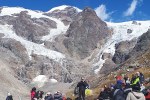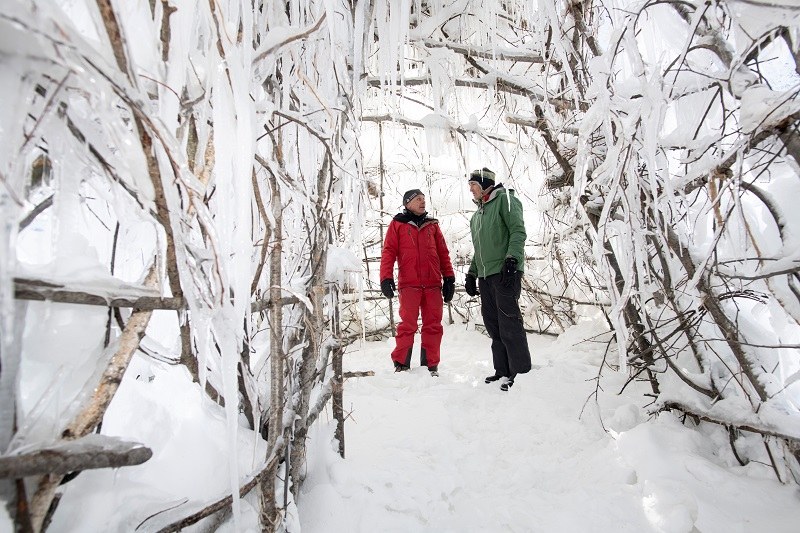News
Glacier ice on a stick
Water shortages due to dwindling glaciers: this climate scenario is already a reality in Ladakh, India. Compared to the Alps, only a tenth of the precipitation falls there, and farmers are dependent on glacier water. In 2014, the Indian engineer Sonam Wangchuck had an idea for how to conserve the ice without additional energy input, namely with ice cones. To do this, he directed meltwater into a pipe, gravity pushed it through a nozzle, and it froze on previously erected cone-shaped constructions. Some of the so-called “ice stupas” are as high as church steeples. Swiss architect Conradin Clavuot describes this system as “revolutionary”. He visited the Indian ice stupas with students from the University of Liechtenstein, rebuilt them in Switzerland and is now developing them further in an exchange with colleagues from the University of Ladakh.
Ropes to provide snow for glaciers
In addition to the ice stupas unveiled in February 2021 at the foot of the Morteratsch Glacier/CH, the prototype of a “snow rope” hangs in the air; it belongs to the MortAlive project led by Swiss glaciologist Felix Keller. The aluminium tube, which is attached to ropes and equipped with water nozzles, works in a similar way to the ice stupas, but Keller wants to use it to cover entire glacier areas with snow in order to preserve even more ice. “As long as there’s snow on the ice, it’s protected,” Keller explains, “because snow reflects incoming solar radiation and insulates against warm summer temperatures.” If the test installation proves successful, a 600-metre long cable directly above the glacier could soon follow. The fact that this would be an intervention in nature cannot be glossed over. “But the people who live from it would have water available for longer. It’s also about preserving winter sports, because the population here also lives from tourism.” Making snow on the glacier over a period of 30 years would cost about CHF 100 million. The glacier shrinkage could be delayed by a few years with this expensive solution, but it could not be stopped, as Keller also admits.
Sources and further information:
Selbstgemachte Gletscher: Die Eiskegel von Indien (nationalgeographic.de, de), „Ich will das nicht schönreden” (Süddeutsche.de, de), „Schnei-Seil” soll Gletscherschwund aufhalten (orf.at, de), MortAlive (de, en), Eisstupa (wikipedia.org, de)




